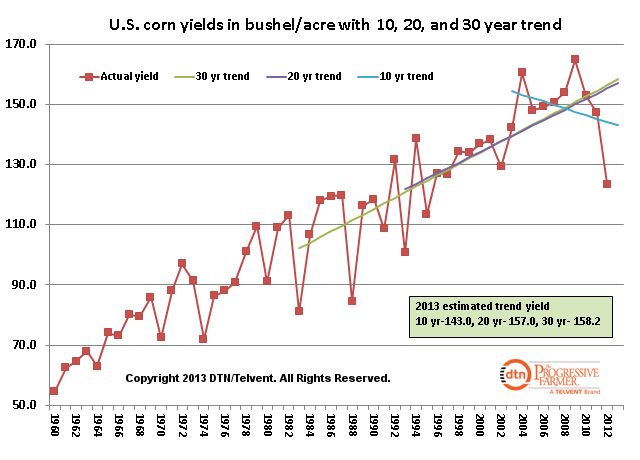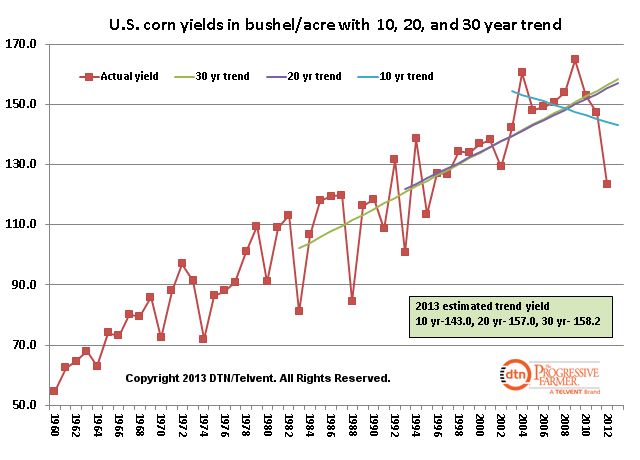Fundamentally Speaking
What Should 2013 Trend Yield for U.S. Corn be Estimated At?
As the calendar has turned from 2012 to 2013 a key question being asked in light of the recent dismal performance in U.S. corn yields is what should the expected 2013 trend yield be?
The accompanying graphic shows actual U.S. corn yields from 1960 to 2012 along with the 10 year, 20 year, and 30 year trend.
We start by noting that U.S. corn yields have been down three years in a row since attaining a new record of 164.7 bushels per acre back in 2009 and this is unprecedented in the modern area of hybrid seeds, which we estimate to have begun back in 1950.
P[L1] D[0x0] M[300x250] OOP[F] ADUNIT[] T[]
This has resulted in the ten-year trend actually falling by a negative 1.14 bushels per acre whereas the estimated 2013 yield comes in at 143.0 bushels per acre.
The twenty-year trend is calculated to be an increase of 1.76 bushels per acre to the estimated 2013 yield would be 157.0 bushels per acre.
Finally the calculated thirty-year trend is an increase of 1.87 bushels per acre resulting in an estimated 2013 yield of 158.2 bushels per acre.
In light of this we find it interesting to see that some of the early 2-13-14 U.S. corn balance sheet estimates are using a 2013 U.S. corn yield of 160.0 bushels per acre.
Given the ongoing drought in much of the Western Corn Belt and Plains this number seems rather optimistic.
It will be interesting to see what the USDA pegs the corn yield at their annual Ag Outlook session next month given their 164.0 figure proffered at last year’s Outlook.
(KA)
© Copyright 2013 DTN/The Progressive Farmer. All rights reserved.






Comments
To comment, please Log In or Join our Community .